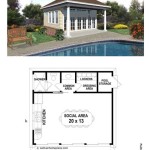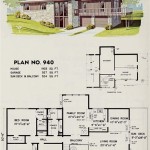Wooden Pump House Plans: Essential Considerations for a Practical and Durable Structure
Wooden pump houses are indispensable structures for providing convenient access to water for various purposes, including irrigation, livestock watering, and domestic use. Whether you're a DIY enthusiast or a professional contractor, it's crucial to have a comprehensive plan in place to ensure a well-built and functional pump house. Here are some essential aspects to consider:
Pump Selection and Protection
The selection of the pump is a paramount decision that will determine the capacity and efficiency of your pump house. Consider factors such as water depth, flow rate, and pressure requirements. Ensure the pump house provides adequate space for the pump and its accessories, including pressure tanks, controls, and valves. Protection from the elements, such as rain, snow, and sunlight, is essential for maintaining the longevity of the pump.
Material Selection and Construction
Wood is a versatile and durable material for pump house construction, offering strength, insulation, and ease of maintenance. Choose pressure-treated lumber or rot-resistant species, such as cedar or redwood, to withstand harsh weather conditions. Proper framing, sheathing, and roofing techniques are crucial for ensuring structural integrity and watertightness.
Ventilation and Drainage
Adequate ventilation is essential for preventing moisture build-up and the accumulation of potentially harmful fumes. Incorporate vents or louvers into the design to allow air circulation. Proper drainage is equally important to prevent water from pooling around the pump house, which can cause structural damage and attract pests.
Accessibility and Safety
The pump house should be easily accessible for maintenance and repairs. Consider a wide door opening and a well-defined path or driveway for ease of entry. Safety features, such as a lockable door, non-slip flooring, and proper lighting, are crucial to prevent unauthorized access and accidents.
Electrical and Plumbing Considerations
Electrical wiring and plumbing must meet local building codes and be installed by qualified professionals. The electrical system should provide reliable power to the pump and any other electrical equipment. The plumbing system should include water supply lines, drainage pipes, and necessary fixtures for convenient water access.
Site Preparation and Foundation
Proper site preparation is essential for a stable pump house foundation. Clear the area of debris, level the ground, and ensure proper drainage. The foundation should be designed to support the weight of the pump house and protect it from movement or settling.
Customization and Design
Wooden pump house plans can be customized to suit specific needs and aesthetics. Consider adding shelves or cabinets for tool storage, installing a small window for natural light, or opting for a different roof style to complement the surrounding landscape. Personalize the pump house to reflect your style and enhance its functionality.
Conclusion
By considering these essential aspects, you can create a well-planned and durable wooden pump house that meets your specific requirements. Whether you choose a pre-designed plan or create your own, ensure it adheres to building codes and is tailored to the characteristics of your site. With proper planning and execution, your pump house will provide reliable access to water for years to come.

Precious Build Pump House 419759 Home Design Ideas Water Well Cover

Pump House Sheds Http Howardwatersystems Com Need 20to 20know Water Well Shed Plans

How To Build A Pump House Shed Small Woodworking Projects Water Well Cover

Insulated Pump House

My Pump House Water Well Shed

Pump House For Well Pumphouse Outdoors Woodwork Water

7 Pump House Ideas Water Well Shed

Pump House Plans

Image Result For How To Make A Pool Pump House Water Well Heating

Into The Woods Water








